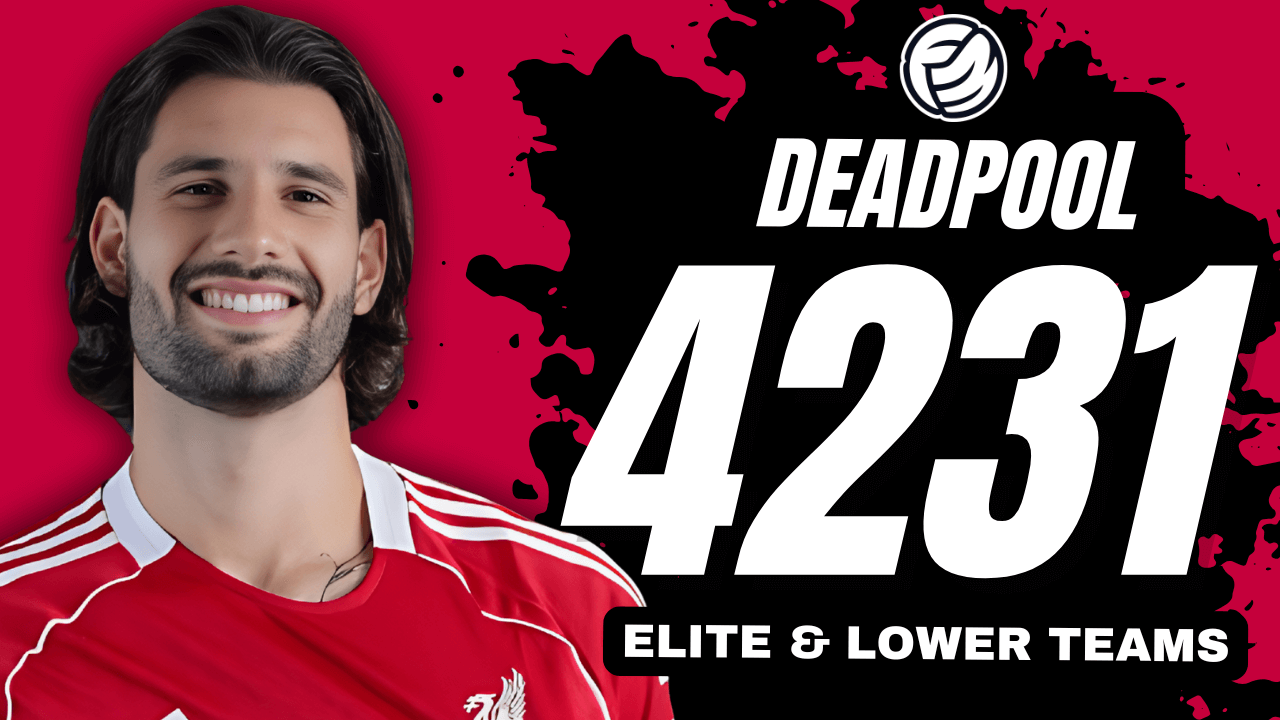
FORMATION: 3-4-1-2
TACTICAL ANALYSIS OF FIFA WOMEN’S WORLD CUP 2023 FINAL ENGLAND VS SPAIN
After a summer of football, the FIFA Women’s World Cup came to a close on Sunday as the final played out at Sydney’s Stadium Australia. The two teams facing off in this year’s final were a Spain team subject to constant rumours of unrest, up against European Champions, England who endured setbacks of their own throughout the tournament.
A first-half goal from Real Madrid‘s Olga Carmona was enough to ensure that La Roja emerged victorious from a game they mostly dominated. Jorge Vilda’s side appeared prepared for anything England would throw at them. Although it is important to say that the Lionesses did carve out some opportunities but were unable to make them count.
This tactical analysis will dissect the tactics of Spain and England and assess how the game played out. We will provide an analysis of how La Roja were crowned World Champions and why the Lionesses fell at the final hurdle.
Spain lined up in their usual 4-3-3 formation with Cata Coll in goal and a back four of former Manchester United player Ona Battle at right back, the two centre backs being Paredes and Codina and Olga Carmona at left-back. The midfield consisted of Teresa Abelleira, Jennifer Hermoso and Aitana Bonmatí. The front three saw Salma Paralluelo get the nod to start after her super performance from the bench against Sweden, whilst Mariona Caldentey and Alba Redondo lined up on either side of her.
Sarina Wiegman opted for an unchanged side from the semi-final against Australia. Mary Earps in goal, a back three of Chelsea teammates Jess Carter and Millie Bright alongside Alex Greenwood. Lucy Bronze and Rachel Daly as wing-backs with a midfield trio of Keira Walsh in the pivot role, with Georgia Stanway and Ella Toone given more licence to get forward to support the front two of Alessia Russo and Lauren Hemp. The only change for England came in the form of Lauren James being able for selection after serving her two-match suspension – the Chelsea starlet started the game on the bench.
Wiegman brought on James and Chloe Kelly for the second half for Alessia Russo and Rachel Daly. This saw England switch to their 4-3-3 formation, as demonstrated below.
Early warning signs for England
The Spanish game plan was clear: they intended to use the space left by England’s wing-backs. Transitions would be critical for Spain; they needed to regain possession quickly and immediately look to attack the open space. Paralluelo’s inclusion in the starting 11 was a clear indication of this tactic; her pace allows her to stretch the pitch and keep at least one of England’s centre-backs (Millie Bright most often) pinned whilst the Carter and Greenwood had to be wary of runners from midfield which meant there was space in the wide areas for the Spanish players to exploit.
As many people came to expect, Spain dominated possession with 58%, which saw them complete 486 passes with an 81% pass accuracy compared to England’s 362 passes and 72% accuracy.
From their games in 2023, the Lionesses have an average PPDA of 5.46, demonstrating Wiegman’s commitment to playing a high press when possible. England tried to press throughout the game, but Spain found ways around the press, leaving the European Champions vulnerable.
The Spain team could evade the England press by emphasising precise passing and quick movement. Players were able to create triangles on the field, allowing for multiple passing options and maintaining possession. By circulating the ball rapidly, they forced England to shift their defensive shape frequently, making it difficult for them to set up an effective press.
Additionally, the Spanish players showcased their excellent ball control, enabling them to navigate tight spaces and escape pressure with ease. This coordinated approach, characterised by fluid passing and player mobility, enhanced La Roja’s ability to bypass England’s pressing tactics.
Furthermore, Spain’s ability to evade the England press continued in the second half despite the Lionesses’ formation change. We can see here how La Roja were able to play short intricate passes to bypass the press, which essentially took three England players out of the game and allowed Spain to build an attack.
Although Spain dominated possession and dictated the tempo of the game, especially in the first half, their goal was primarily due to England being the architects of their own downfall.
Lucy Bronze decides to carry the ball out of defence as England have regained possession. Although, rather than opting to carry the ball out in the wide areas, the Barcelona right-back decides to move infield as Spain are transitioning from attack to defence.
However, La Roja are able to get numbers back quickly, and red shirts soon surround Bronze. There was still an opportunity for England to retain possession, though, as we can see in the second image, Bronze could have played a short pass to Ella Toone, who had space in front of her to run into.
Unfortunately for England, Bronze makes a poor decision to hold onto the ball, which allows Spain to regain possession. La Roja are able to execute their game plan to perfection in this instance.
When England left space, there was always a Spain player ready to move into it, and this is how La Roja scored the only goal of the game. After recovering possession, it is swiftly played out to Caldentey, who is ready to attack the space left open by Bronze.
Additionally, Salma Paralluelo makes an intelligent run into the England penalty area, which forces the defensive line to drop back. Olga Carmona makes one of her marauding runs forward and overlaps Caldentey, who promptly plays the ball into her path. Olga takes a couple of touches before hitting a low drive beyond Mary Earps.
Jorge Vilda’s decision to play Paralluelo from the start was wise. Throughout the game, the 19-year-old was the ‘out-ball’ for Spain. Here, Cata Coll opts to play a long ball up to Paralluelo. The Barcelona forward drops deeper to receive the ball and lay it off to Hermoso.
England were very aware of the threat posed by Paralluelo as Millie Bright was tasked with not letting the former sprinter out of her sight. So, as we can see above, Paralluelo plays the ball back to Hermoso and since Bright has tracked the young forward, which leaves space for Paralluelo to spin and run into as Hermoso looks to play a pass back into her path.
Having a forward with significant pace, such as Salma Paralluelo, proves advantageous as she allows Spain to mix up their style of play. We know that typically La Roja look to play a possession-based game and build an attack from the back, but the Barcelona starlet gives them the option to play long as she has great strength to hold up the ball and pace to run in behind the defensive line.
Her rapid speed enables her to make dynamic runs into the channels or down the flanks as soon as Spain regains possession. This quick movement forces the opposition’s defensive line to retreat, creating a larger gap between their midfield and defence.
Additionally, the Barcelona forward’s skill set provides another way for Spain to negate the opposition press. Instead of having to always pass their way around or through a press, Spain have the option to hit it long to bypass the press completely. This approach puts pressure on the opposition to rethink their pressing tactics, as they must be cautious of the space left behind.
Paralluelo’s strength, acceleration and ability to outpace defenders can disrupt the opposition’s defensive structure and create scoring opportunities which was on show throughout the World Cup final.
Towards the end of the game, when England were throwing players forward in search of an equaliser, the Lionesses were still determined to play in the wide areas. As we can see in the first image above, England are playing a ball out to Chloe Kelly on the left wing.
Lauren James’ ability to find pockets of space has been well documented throughout the World Cup, and as shown above, she may have been a better passing option in this situation. A quick pass into James, who could have played it through to Beth England, would have seen the Lionesses potentially be able to get a shooting opportunity rather than playing the ball out wide and losing possession.
Furthermore, we can see a similar scenario in the second image where a ball infield to Georgia Stanway would’ve been a much better passing option rather than trying to force the play in the wide area, which was much easier for Spain to defend.
Conclusion
Overall, Jorge Vilda’s decision to start Salma Paralluelo proved right as she was a thorn in England’s side all game with her direct running and off-the-ball movements. She offered Spain something different, and they played to her strengths by using long passes when needed, giving them an element of unpredictability England struggled to cope with.Sarina Wiegman and the Lionesses probably had a good idea of how Spain would try to play, but, for the first half especially, they were powerless to resist once La Roja got into their rhythm.
Switching to a 4-3-3 after halftime allowed England to get a foot in the game, but Spain could take the sting out of any attack and could see the game out. Towards the end, the Lionesses’ play became more frenetic as they saw the game slipping away, which only played to Spain’s advantage.
Sarina Wiegman’s tactics mainly depend on England having the majority of possession. Against Spain, that was always going to be unlikely. As a result, the Lionesses struggled to contain their opponents and looked out of ideas when they did regain possession.
La Roja utilised the space well and took advantage of England’s mistakes. Ultimately, they won the tactical battles in all the right areas and became FIFA Women’s World Cup 2023 winners as a wonderful tournament came to an end.
HOW I EMULATED SARINA WIEGMAN’S 3-4-1-2 ON FOOTBALL MANAGER 2023
FORMATION: 3-4-1-2
As we can see from the tactical analysis of the match against Spain, England’s weaknesses were exploited by Spain, especially because Spain’s possession evaded England’s pressing and because of Paralluelo’s impact.
Switching to the formation she played before this FIFA WOMEN WORLD CUP, a 4-3-3 in the second half did not help England to break through Spanish defense.
After taking into consideration the weaknesses of this 3-4-1-2, I decided to create 2 formations on Football Manager, the 3-4-1-2 which was my main formation and a more defensive 3-5-2 which I played against tougher teams in very important matches, such as the FIFA WORLD CUP’S Final against Portugal. I tested these two tactics in many matches as you can see from the results because I wanted to play a 4 years long season (July 2022- July 2026) until the end of Fifa World Cup 2026.
Let’s now examine the two tactics I created.
First one: 3-4-1-2
Mentality: Positive. I chose this mentality because it helps me to control the game without leaving too much space to the opponent, if I choose a balanced mentality on Football Manager 2023, it will lead my team to leave too much space and possession to the opponents.
- Players roles and instructions
For this tactic I did not use many player instructions, I preferred to give more importance to the team instructions. The only player personal instructions I chose is a “shoot less often” for my complete forward on support.
So, let’s see the roles of each player.
Mary Earps: for her, a sweeper keeper on defend is a good choice, England wants to play out from defense, so sweeper keeper is better than a simple one.
Millie Bright, the leader. After a knee injury in March, she played very well during the World Cup and she was already fit for the first match against Haiti, this shows her work ethic and determination. She likes playing long balls but I did not choose the ball-playing defender role because she is also the best of the defending trio for her marking and defending skills, so I chose a central defender in cover. Besides, I believe that on football manager 2023, a combination of two ball playing defenders on defend and one central defender on cover is very effective because the central defender covers the spaces that the two ball playing defenders leave behind them.
Alex Greenwood and Jess Carter: ball playing defender on defend
Rachel Ann Daly: wing back on attack. Daly is a forward and was adapted by Wiegman as left wing back, but she has very good offensive skills.
Lucy Bronze: Barcelona's defender played as a wing-back on attack too during the match against Spanish and her mistake in losing the ball led to Spain’s goal.
Keira Walsh: the world’s most expensive female player, also playing for Barcelona can be replicated on Football Manager 2023 as a deep-lying playmaker on defend.
Georgia Stanway: ball winning midfielder on defend to help our team balance, but in the 3-5-2 more defensive tactic, since we give up an advanced midfielder (Tone), Stanway’s role can be replicated on a more offensive mezzala on attack, who moves forward toward the box and link the play with the strikers. In fact Stanway plays as an attacking midfielder for Bayern Munich Frauen team.
Ella Toone: playing as a forward for Manchester United, in England women’s team, Wiegman plays her as an advanced midfielder behind the two strikers James and Russo. Her role can be replicated as an advanced playmaker on attack.
Lauren James (Alessia Russo): deep lying forward on attack, if Russo plays in this position her great physical skills helps her to gain and retain possession more but her main duty is to score.
Lauren Hemp: the Manchester City forward’s role can be replied as a complete forward on support, I instructed her to shoot more often because I want her to drop down and link the play more. Hemp played as a winger on Wiegman’s previous 4-3-3 formation but in World Cup 2023 she played as a striker who often dropped down and wide to link the play.
In the second tactic, the 3-5-2, since I gave up the advanced midfielder to replace him with a defensive midfielder, I need another player to link the play with the midfielders, so the left striker (Hemp’s role) can be replicated on football manager 2023 as a complete forward on support or also as a false 9 (in this case I played Sterling on this role instead of Rashford).
Team instructions
In possession
- Attacking width: wide
- Pass into space
- Overlap left and right
- Play out of defense
- Passing directness: shorter
- Tempo: slightly higher
- Crosses: lower
- Work the ball into the box
- Dribble less (can be also left blank, if you want to retain possession more you can use it).
In transition
- Counter-press
- Counter
- Distribute to Center Backs
- Roll it out
Out of possession
- Line of engagement: higher
- Defensive line: higher
- Trigger press: much more often
- Trap outside
- Stop crosses
Team instructions are the same for both tactics. Set pieces instructions are already included in my tactics, I use these set pieces routines for all my tactics.







![FM26 Data Tweaks [v1.0 | v1.6]](assets/downloads/fm26/fm26-data-tweaks-by-sirtavares-v2.th.png)


Discussion: Sarina Wiegman's England Women Emulation
2 comments have been posted so far.